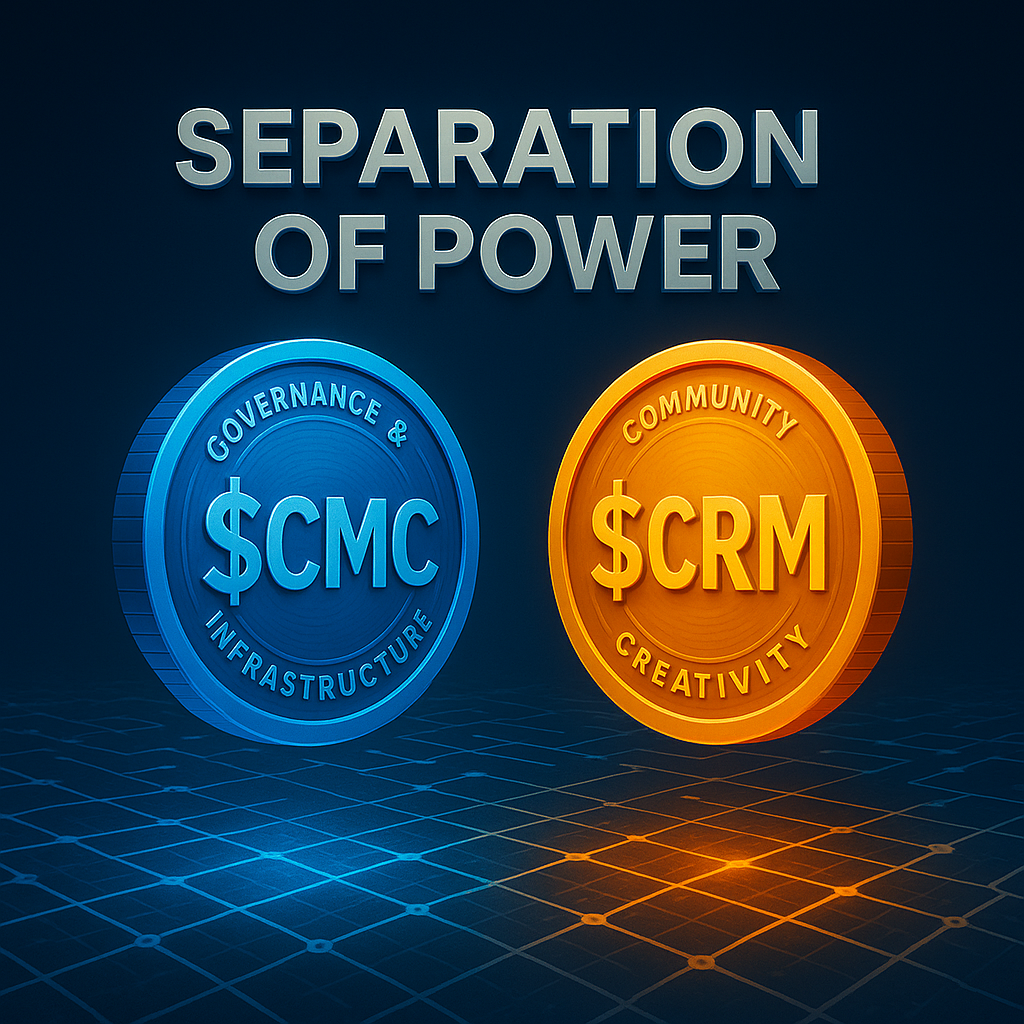Why CromaChain Uses a Dual Token Model: $CRM and $CMC

Why CromaChain Uses a Dual Token Model: $CRM and $CMC
In the ever-evolving world of blockchain, token models are often a reflection of a project’s philosophy. For CromaChain, the decision to implement a dual-token structure — $CRM and $CMC — goes far beyond technical convenience. It is a bold demonstration of integrity, transparency, and a deep commitment to community empowerment.
A Clear Separation of Purpose
CromaChain introduces two distinct tokens:
- $CRM (CromaArt Token): A utility token designed entirely for community use, functioning across the ecosystem’s AI tools and NFT utilities.
- $CMC (CromaChain Core Token): The governance and infrastructure token used for validating nodes, paying gas fees, and developer incentives.
Rather than combining all functions into one token — a common approach in many projects — CromaChain deliberately chose separation. Why? Because each token serves a fundamentally different stakeholder: the community and the protocol itself.
$CRM: A Token for the People
The $CRM token is revolutionary not just because of its utility, but because of how it was distributed. Zero allocation was given to the team. That’s right — 100% of the $CRM token supply is dedicated to the community.
This model is a rarity in Web3, where developers often allocate a substantial portion of utility tokens to themselves, leading to long-term dumping risks and reduced community trust.
With $CRM, CromaChain is sending a message to the entire blockchain space:
“We believe in community-first. And we’re putting it in writing.”
$CMC: Powering the Chain and Funding Development
To sustain the infrastructure and incentivize developers, CromaChain introduced $CMC. This token is used for:
- Gas fees across all CromaChain operations
- Validator staking and node rewards
- Governance participation
- Developer and team incentives
In contrast to $CRM, the team does hold a portion of $CMC — and for good reason. It aligns incentives with long-term infrastructure growth rather than short-term speculation.
Why This Model Matters
The dual-token approach offers key advantages:
- Trust Building: Communities can adopt $CRM without worrying about team dumps or manipulations.
- Clarity of Function: Each token has a clearly defined role, reducing confusion.
- Sustainability: Development remains funded through $CMC, while $CRM remains untouched by team interests.
This level of tokenomic integrity is rare and sets a new precedent for crypto startups looking to balance community ideals with operational realities.
A Model Worth Emulating
CromaChain’s token strategy isn’t just good economics — it’s good ethics. In a time when trust in Web3 is often tested, separating utility from control and profit sends the strongest message of all:
"This project is serious, this team is disciplined, and the future belongs to the users."
As more blockchain projects consider how to align with their users, CromaChain’s dual-token architecture may well become the blueprint others follow.
🚀 Explore CromaChain Beta
🔐 Test TrixWallet
🧠 Read More About $CRM
📌 This article was written to explore and explain CromaChain's dual-token model in an objective, community-focused lens.
Comments (2)
Web3 Reader
June 16, 2025
Very informative article! I agree that Bitcoin ETFs are a game-changer.
Crypto Enthusiast
June 16, 2025
I wonder how regulations will affect adoption in developing countries.